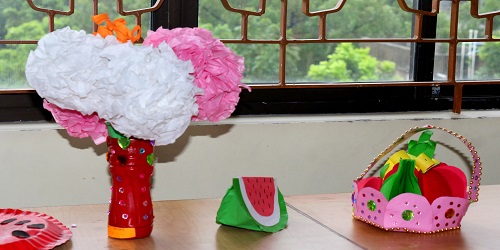
![]() 11th of January 2022
11th of January 2022
What is on-page SEO?
Table of contents
- what is On-Page SEO?
- On-Page SEO tools
- How to do On-Page SEO?
- Meta Title
- Meta Description
- Permalink(URL Structure)
- Heading
- Content
- Images
- Schema Markup
- Internal Linking
- External Linking
- Revision in short
What is On-Page SEO?
SEO is the organic process of making your website rank in search engines like google, yahoo, bing, and youtube. On-Page SEO is a Search engine optimization technique to help the bots to understand your site, it will get the proper information about the pages of your website. On-page SEO is directly involved in changing the webpages, It works on meta titles, meta descriptions, internal links, external links, images, etc. On-page SEO helps your site to achieve a high ranking in search engines. I will describe to you how on-page SEO works on your website.
On-Page SEO tools:
There are some SEO tools are available on the internet that will help you to check your site performance, contents, keywords used in content property or not. These tools will help you to know about the changes you may need to make an SEO-friendly website or what actions you need to perform on your site for search engine optimization. This SEO tool will compare your site to the other top site and give you a recommendation for the on-page SEO. Here the tools are
These tools are very easy to use.
How to do On-Page SEO?
Now I will give you the basic points of need for making your website high ranking in search engines.
• You need to focus on the standard of professionalism in your website.
• Your website should not have any broken links or 404 error pages.
• Your site will be fully mobile responsive because now a day where the maximum users use their mobile phones to use your site.
• Your site will be completely SEO friendly, no need to use extra unnecessary code.
• Fast loading time is required as the customers will not have time to wait until the site is open.
• You should have a close look into the matters of users staying on your site for a long time. if they hit back quickly, it makes a bad impression on the search engine.
• The contents should be properly maintained as per the SEO guideline because the content is the king in on-page SEO.
• Your site should have a feedback form so that users can leave feedback about your site and it will improve your site performance.
• Search engine will ensure whether your site is having SSL or not, now a day it is mandatory for search engine optimization.
Meta Title:
It is a very crucial factor in on-page SEO because meta tile will help the search engine to know about the page or post. You have to use the keyword once in the meta title. Try to maintain the length within 70 characters of the meta title.
Meta Description:
You should write a unique meta description tag for each page or post, it is a short description of your post is having the targeted keywords in it, it helps the user to know about your post before entering your website. You should maintain the length of 150characters of the meta description.
Permalink(URL Structure):
Basically, it is the URL of the individual page or post. The keywords should stay in the URL and each string of the keywords differentiate by the dash symbol. Please keep in mind that your link should not have any special characters. Look into the below URL that will help you to have a better understanding of the permalink structure.
https://www.bsblogger.in/post/how-to-add-your-website-in-google-search-console
Heading:
It is good to use the keyword in the heading within the h1 tag, it makes the sense of the post or page. No need to use more than one h1 tag but still if you want to use a subheading in your page or post try to use the other tags like h2, h3, etc.
Content:
It is a vital point of on-page SEO. the content is an elaborate description of the page or post. You have to keep in mind that the users will stay on your site on the basis of the content so you should maintain the quality of the content. Try to use the targeted keywords in the contents multiple times but not more than unnecessarily. Search engine likes long articles so I will recommend you to use 5000+ words.
Image:
Images in your site or blog post make a professional look that will help you to attract users to spend more time in your site or post, if the users spend more time in your site search engine will make a higher ranking of your site so you can understand the importance of images factor in on-page SEO. You should always try to use the images in your site properly with the name image name and alt text. It would be better if you can use the keyword in the name of the image that will help the search engine to recognize your site very effectively.
Before uploading the images to your site some points should keep in mind
1. The quality of the images should be good in use.
2. Do not use big-size images, you can compress the images before use on your site, image compressor will reduce the image size but the quality of the images will remain the same. There are so many image compressors are available on the internet.
3. Try to use the caching techniques, it will help your site to be fast loaded.
4. Try to use a CDN Technique, it also helps the site to be fast loaded.
Schema Markup
Schema makeup is the latest topic invented in the on-page SEO. It helps the search engine to understand the contents or the type of service is providing by your site. Add schema code to your website to help the search engine to return more information about your website to the users. You can generate an online schema from the below link
https://technicalseo.com/tools/schema-markup-generator/
Linking:
Two types of linking are used in on-page SEO one is internal linking another is external linking.
Internal Linking:
Internal linking makes your site more informative by providing a specific explanation of the specific words. It uses an anchor text to link in your own site where the explanations are written about the anchor text. If you can use the keyword within your anchor text that will be more helpful to the search engine to know that the site is providing more information about the content is written for your post or site. I will recommend you not to use keywords forcefully in the anchor text, you should have a balance over it.
External Linking:
External linking is very useful for on-page SEO. It also helps the search engine to understand that the site is more informative but before doing external linking you should keep in mind that websites that are linking in your post or page should have related content s or the site should be relevant to your page or post.
While you link with the external websites you have to know about the popularity, the authority of the websites, and check these sites are trusted or not. If you do not know about the site, use the do-follow tag but if you know about the trustworthiness, popularity, and authority of the site where you want to put external linking, use here the do-follow tag.
Revision in short:
- Use the keyword in meta title and post title.
- Use the keyword in the meta description and try to write a meta description within 150words.
- Use the keyword in the permalink(URL).
- Do not use more than one h1 tag. Use h2, h3 tag as per your need.
- Give proper alt text in the image.
- Optimize images before use on your site.
- Reduce page loading time.
- Use internal and external linking.
- Provide a social sharing option on your page or post.
- Use long-tail keywords.
- Add schema.
Related Blogs
![]() 31st of December 2021
31st of December 2021
![]() 8th of January 2022
8th of January 2022


